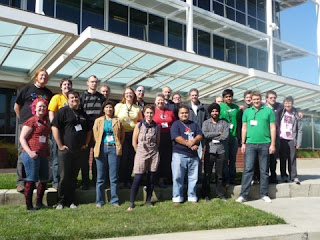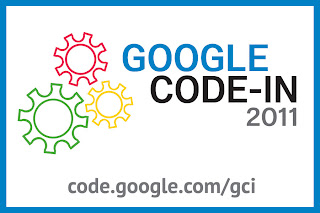The
Desktop Summit 2011 was held in
Berlin, Germany, from 6-12 August 2011 and was the second joint conference of the
GNOME and
KDE communities. Almost 800 attendees gathered in Berlin to review progress, share ideas and work together on various free software projects relating to desktop and mobile user interfaces. While many participants were from Europe as expected, other contingents came from Brazil, India, the United States and beyond. The
GNOME Foundation and
KDE e.V. sponsored travel and accommodation costs for more than 80 attendees.
Desktop Summit organizers, mostly volunteers, worked for nearly a year to coordinate all the details that made the event successful. More than 50 volunteers pitched in to help the event run smoothly for the week. The collaborative spirit of Free and Open Source technology was an essential factor in how the group worked together.
There was a pre-registration event and two evening parties providing opportunities for people to spend time together without the stress of project deadlines. Other social activities included the traditional soccer and volleyball matches and as participants mostly concerned themselves with having fun (as well as a bit of beer drinking), it was not clear which of the KDE or GNOME teams won. There was an ice cream dessert gathering and unofficial curry cook-outs with food, drinks and conversation--both work and fun.
At the Summit, the City of Berlin announced the winners of its open source competition “Berlin – Made to Create”, a program promoting open source and open standards ideas and solutions. At the same session, the GNOME and KDE communities also announced their outstanding contributors.

From Tuesday to Friday, 85
Birds of a Feather (BoFs) sessions and countless informal hacking sessions took place. Two hacking rooms and the hallways were full of people working on projects. BoFs ranged from small working groups to popular and multi-faceted projects to the introduction of new projects. The
GObject Introspection Room shows the kinds of work undertaken at the Summit: a dedicated space with 12 to 20 people at any time, it ran the duration of the Summit, and was primarily focused on bug fixing GNOME API bindings. The KDE community also participated by working on bindings between GObject libraries and Qt/C++ and smoothing out other cross-desktop issues.
The KDE Release Team got together to talk about their strategy for
Git versioning migration and the move to Frameworks 5. The BoF session was well attended, and included release team members and downstream packagers. In a short time, the team gathered feedback and came up with a plan for adding predictability to the release team's work and output, and for making the work within the team more effective and sustainable. Working remotely, this would have taken considerably longer and would not have achieved such good results.
The fifth
Text Layout Summit was held concurrently with Desktop Summit 2011. At present, there are several font and text shaping technologies and no unified system library. As a result, complex text layout scripts such as Arabic or Myanmar are not well supported, and Western/European fonts often lack advanced text formatting capabilities. As FOSS applications are intended for use by all nationalities and languages, this is a serious shortcoming. Text Layout Summit 2011 made substantial progress toward a common approach, especially with Graphite, which is focused on the minority languages of the world.
The Desktop Summit is an important enabling event, making it possible for teams to learn, share and make substantial progress in their Free and Open Source projects. During the GNOME and KDE Annual General Meetings (AGMs), the respective projects recognized the achievements of members, made important announcements and reflected on the lessons learned over the past year. New Executive Director Karen Sandler led the GNOME AGM, with the recent release of GNOME 3 being a central topic. Many perspectives were contributed, including design, marketing, bug fixes and quality. The location of the 2012 GNOME Users And Developers European Conference (GUADEC) was revealed. With three impressive bids to host GUADEC,
La Coruña, Spain, was chosen! The GNOME community looks forward to seeing its members next summer.
At the KDE e.V. AGM, President Cornelius Schumacher presented the work of the Board and KDE e.V. activities of the past 12 months. KDE e.V. organized or helped to organize several successful international conferences such as Akademy 2010 in Tampere, conf.kde.in in India, Camp KDE in San Francisco, and financially supported 21 contributor sprints. Cornelius Schumacher also explained the e.V.'s role in supporting and representing the KDE community in legal issues like domain handling, trademarks and similar areas.
Speaking for both organizations, Lydia Pintscher said, "We consider Desktop Summit 2011 in Berlin to have been a huge success for the collaboration among free software desktop communities. We learned a lot during the first Desktop Summit in
Gran Canaria and were able to improve on many big and small things that made a real difference for the conference. We are looking forward to seeing the results of this work and to increased future collaboration."
By Carl Symons, William Carlson, and Stuart Jarvis










